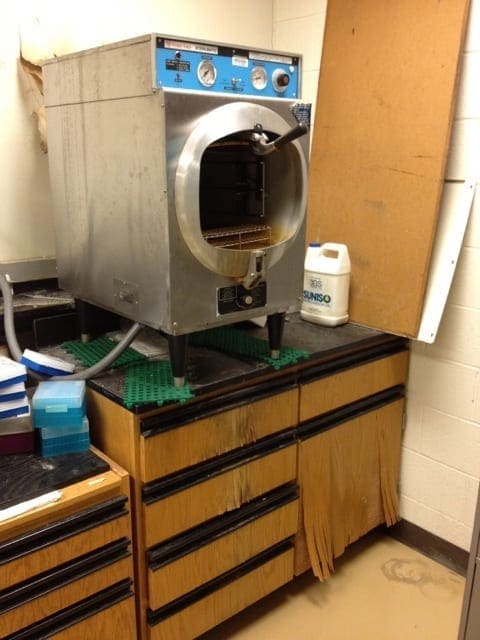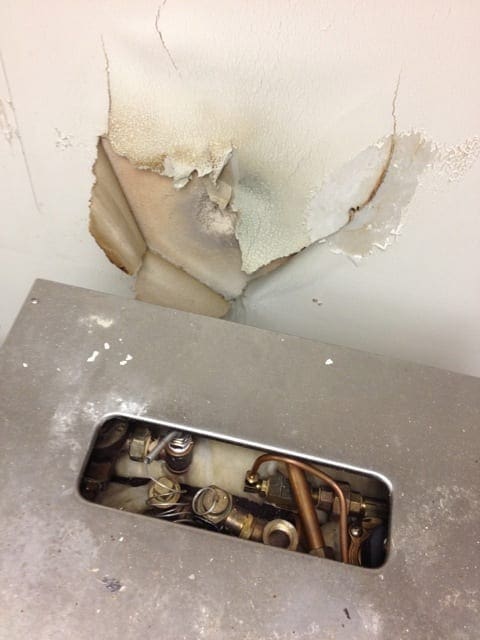Bad Benchtop Autoclave Installations
By: Priorclave North America
Categories: Benchtop Autoclaves Lab Autoclaves Lab Design Steam Autoclaves

Sometimes a bad benchtop autoclave installation is pretty straightforward:
That drain valve looks pretty good—it’s taped, they’ve used a quality ball valve (which is much more reliable over the long term than a standard gate valve). But we sure hope no one left their car keys or phone in that drawer.
Now, such SNAFUs aren’t all that common. Usually, the initial installation looks perfectly tidy and competent.
But give it a few years—even without mishap—and you might find yourself looking at this:

Benchtop autoclave nightmares.
This autoclave was installed a few years ago at a large midwestern research university.
What happened?
#1: The Drain Valve Failed
The drain on this autoclave (as with the one above) is positioned underneath the front left corner of the unit. Upon inspection, our technician found that the valve had failed long ago. This may have been avoided if the original installer had selected a superior valve and taken more care plumbing it.
But maybe not. Over time, hardware inevitably fails. If you’re in a charitable mood, you could give the original autoclave installer a pass on this one. Still, the question remains why no one in the lan investigated when they first noticed the damp countertop. The drawer cabinet didn’t reach this extreme state of soggy collapse overnight. The rule: If you see something, say something. Given time, the tiniest trickle will dig the deepest canyon. Don’t let that process play out on your workbench.
#2: This Benchtop Autoclave is Improperly Vented
All health risks aside, this installation is regularly pouring gouts of steam into the room. (Our installer observed that the high ambient humidity was steadily rotting the rest of the room’s wooden fixtures.)
First, that makes for a pretty unpleasant working environment. Second, the building’s HVAC system was not specced out for a steam bath. The ventilation system was obviously being overburdened by the additional heat and steam from the autoclave In fact, the exhaust (vented from the back of the machine, upper left corner) is spraying directly onto the drywall behind the machine. Check out the detail pic below:

benchtop autoclave installation mistake detail—poor venting
The venting steam is steadily burrowing a hole into the wall.
Unpleasantness working conditions aside, this configuration is spraying airborne contaminants into the lab. For many applications that may be no big deal (well, apart from the smell). But depending on the cycle you’ve selected and the items being sterilized, viable pathogens and dangerous fumes can be released with the autoclave steam.
In this case, at the very least a fume hood should have been installed above the unit.

